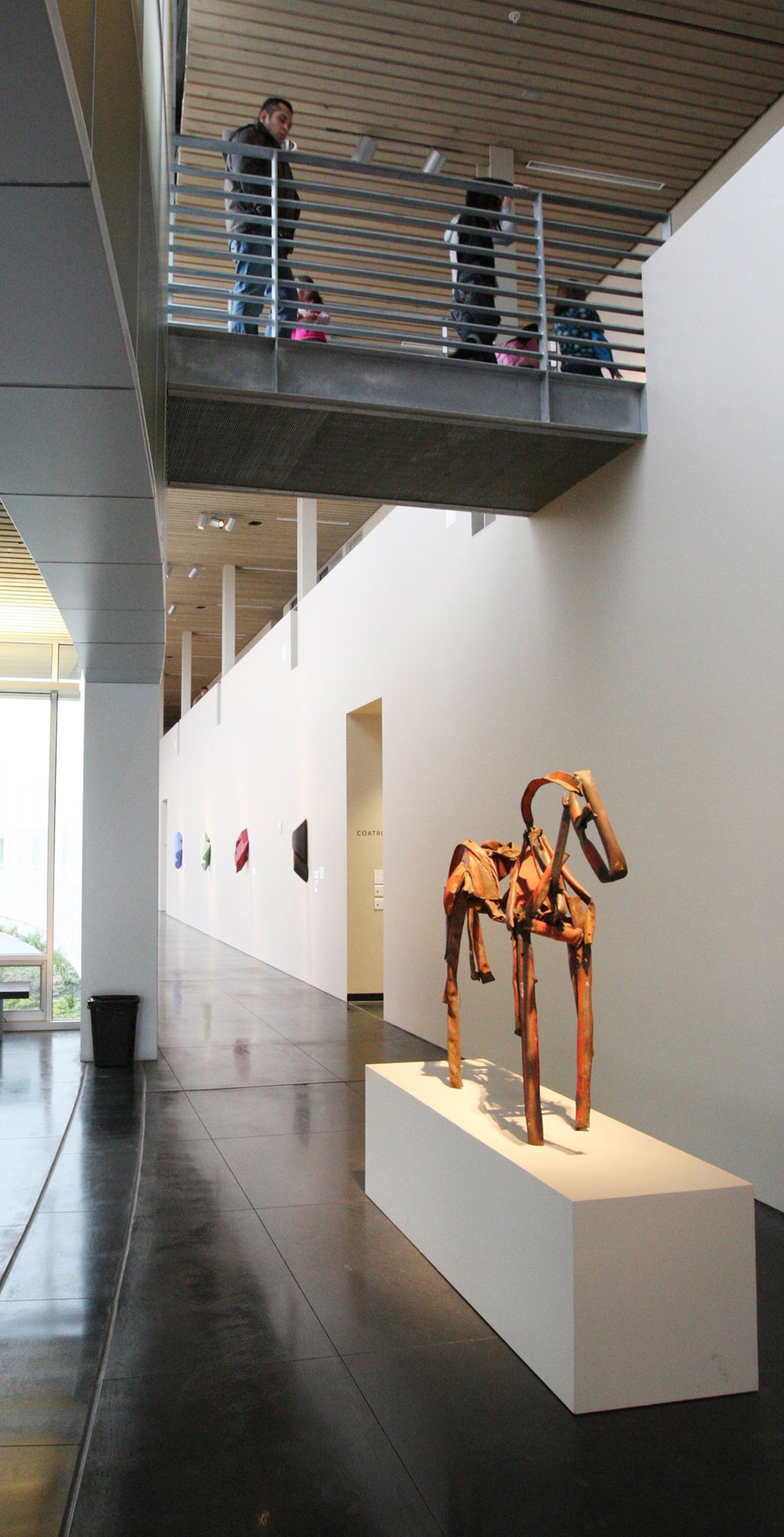Bellingham raving about museum’s new Lightcatcher building

BELLINGHAM – It’s hard to miss the Whatcom Museum’s new facility here, even at night. How can you miss an $18.3 million building that glows? The Lightcatcher museum, with its 37-foot-high glass wall, reflects sunlight during the day and illuminates from interior lights at night, a constant glow hovering over downtown.
That glow spotlights arguably the city’s most important cultural project. It also serves as a metaphor for the mood of many city and business leaders.
Folks here are outdoing themselves with their own metaphors. A 37-foot beacon, downtown business owners call it.
A glow “like a yellowish agate from a nearby beach,” the museum’s architect says.
Lightcatcher, 12 years in the making, debuted last month, with about 5,000 visitors on opening day to check out the two-story, 42,000-square-foot museum of contemporary and abstract art.
It features work from the Northwest and around the world, including a self-portrait by acclaimed photorealist Chuck Close.
“This makes us a major player” in the Northwest art scene, said Patricia Leach, executive director of Whatcom Museum.
Before, she said, “if you wanted to see major artwork, you (had to) go to Seattle or Vancouver.”
Leach and community leaders believe art fans will regard Lightcatcher with the same reverence they hold for Tacoma’s Museum of Glass or the Seattle Art Museum.
That’s quite a statement. But city leaders have high expectations that Lightcatcher, funded mostly through sales taxes, will help draw more tourists from Vancouver, B.C., Seattle and around the region.
The museum is two floors, with a courtyard, cafe, gift shop and a children’s interactive museum on the ground level, and art exhibits occupying both floors.
The centerpiece: a 180-foot-long translucent facade that reflects sunlight onto the courtyard and brings light into the museum’s interior. At night, the museum lights create a lantern-like glow.
“We decided to make it a wall that gathers light … because in the Northwest, sunlight is sacred,” said museum architect Jim Olson, of Olson Sundberg Kundig Allen Architects in Seattle.
Olson said he wanted to create “a sense of mystery, like our mist and fog. In the Northwest, when the mist is in the air, you can see things in the distance but you can’t see them clearly.
“With the glass wall, we sandblasted it, so you can barely see through the wall, but not quite. That gives it a mysterious quality that relates to the Northwest light.”
Museum officials wanted to strip away the stuffy “wine-and-cheese” perception of the art world and replace it with a more laid-back, Northwest sensibility.
This being Bellingham, known for its mountain biking, hiking and skiing, the museum pays homage to the great outdoors. The color schemes mirror rocks and tree bark. The ceiling looks like it was made from weathered driftwood.
In the courtyard and garden, boulders come in shades meant to conjure images of glacial rock, interspersed with ferns and ginkgo trees.
That project was headed by Charles Anderson Landscape Architecture, who also worked on the gardens at Seattle’s Olympic Sculpture Park.
Lightcatcher is also the new home for the children’s museum, called Family Interactive Gallery (FIG), featuring animation dioramas, 3-D images and art games on shapes, colors, shadows and light.
In here, it sometimes feels like “Romper Room” – a bit rowdy. That’s expected when you let loose a dozen little kids in a room with games.
Lightcatcher is part of the city’s three-museum campus, along with the Old City Hall and Syre Education Center.
The Old City Hall, which was the old art and history museum, will now just be a history museum, focusing on the city’s and the region’s past.
A Bellingham icon, the 1892 Old City Hall building had been synonymous with art. But the grand red Victorian landmark couldn’t be fitted with proper temperature and humidity control to house valuable artwork, museum officials said.
Leach came here two years ago after a stint overseeing one of the nation’s oldest museums, The Hermitage, President Andrew Jackson’s home outside Nashville, Tenn.
In Bellingham, she found this ambitious museum building in the works without, in her estimation, an ambitious-enough mission.
Plans called for the Lightcatcher to focus on “emerging Northwest artists. But that’s what the La Conner museum (Museum of Northwest Art) does already,” Leach said.
“Here we have a state-of-the art building. We have an opportunity to bring in art from the Northwest and beyond.”
With that in mind, curators secured a partnership to borrow artwork from the Smithsonian Institution in Washington, D.C.
The museum has already lined up the Smithsonian’s Works Progress Administration collection for an exhibit next fall, featuring work by artists of the Great Depression.
In April, the museum will introduce a new exhibit, “Show of Hands: Northwest Women Artists 1890-2010,” featuring Imogen Cunningham, Doris Totten Chase and Fay Jones.